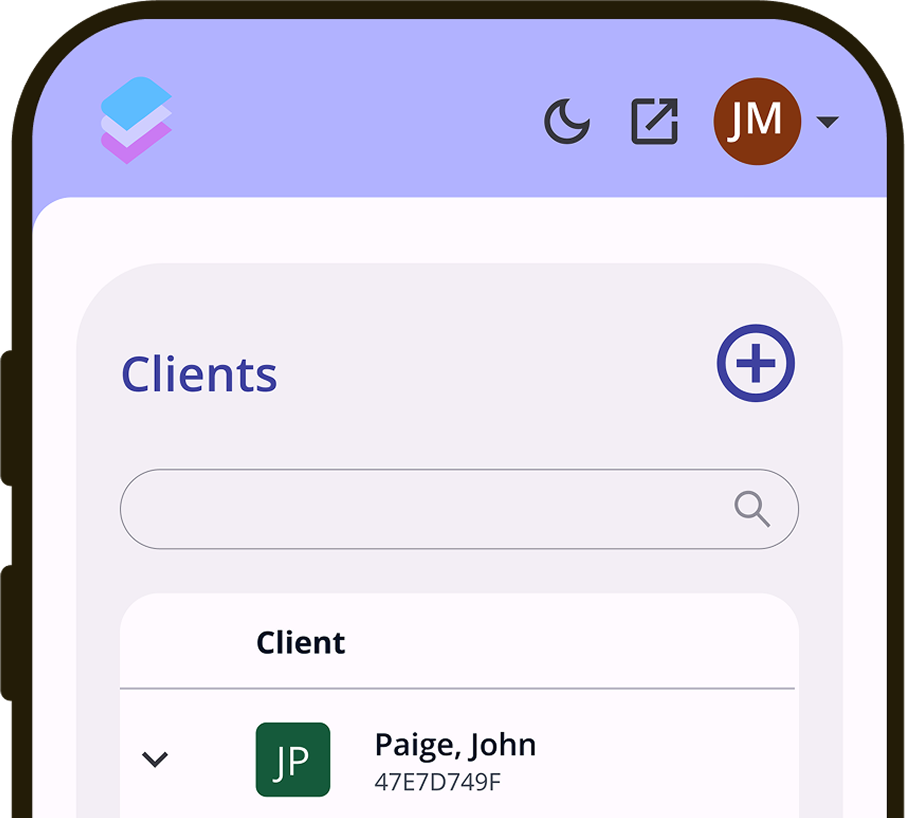
Choosing a homeless management information system (HMIS) vendor that has a strong reputation for innovation and customer support will be tremendously beneficial to your community, clients, and employees.
By using a state-of-the-art and user-friendly interface, you will avoid the frustrations and limitations of a subpar system, and better help members of your community achieve economic self-sufficiency. Technology should be a tool for success, not a barrier.
But how does one find the right vendor, especially when there are so many to sort through?
We encourage you to visit and download our full HMIS Transition Guide. For now, here’s a snapshot of the steps to take as you seek to better your community.
1. Align technology with your organization’s overall strategic direction and outlook.
Ask yourself, “What is the overall strategy and direction of my organization? How do I want my HMIS to help achieve these plans?” Put simply, develop long-term goals and a strategic direction.
These goals should be the result of a collective effort, and the more detailed you can get, the more actions you put in place, the better you can narrow down possible vendors. Prioritize capabilities that best fit your needs and help you achieve your goals.
2. Establish an internal technology vendor evaluation team.
Identify who at your organization has the expertise and broadminded perspective to effectively evaluate individual vendors and their products. This could include senior managers and employees that serve the primary functions of your organization. Knowing the community’s needs, these individuals can add extensive knowledge and insight to the process of vendor selection.
This team will be responsible for determining both technical and business requirements, identifying potential solutions, and preparing the necessary requests for vendor proposals. Ultimately, they will evaluate the technology and provide recommendations.
3. Complete a technology assessment.
Are you aware of all the technology that is available for your HMIS? Consider the current technology environment and map your potential future HMIS software needs accordingly.
Take inventory of current systems and the hardware that’s available. Review all costs, and assess all needs, gaps, and employee satisfaction. These actions will help you realize the goals for your new vendor system.
4. Prepare a critical business needs analysis.
What is important for your HMIS? Define issues and needs that are specific to your organization and community. Perhaps you want an HMIS that better humanizes your case management intake workflows, or one that effectively embraces a whole person care approach. Each vendor system will have its own unique features and functionality. Therefore, focus on your needs, identify your priorities, and use these considerations to guide your decision-making.
5. Choose a preliminary set of vendors and solutions.
Selecting the right HMIS vendor for your organization with specific technology requires a “matchmaking” process. Search for the best software and service provider to deliver it. This latter point is frequently overlooked, often to the detriment of the long-term usefulness of the software.
With any product, there will be malfunctions, and you want your vendor to be responsive, supportive, and effective in how they resolve issues.
When assessing both vendors and their software, consider installation, integration, support, training, maintenance agreements, upgrades, enhancement policies, customer service, and reputation.
6. Prepare a comprehensive request for proposal (RFP).
Once potential vendors have been identified, request detailed proposals from each. Identify and document all the possible features and functions you are looking for in your HMIS, then perform a detailed system and function analysis.
This includes evaluating a vendor’s quality and level of service (help desk, training support, etc.). You’ll also want to determine how effectively you can use their data analytics. Make sure your RFP focuses on high-priority criteria and aligns with your overall strategic direction.
7. Evaluate vendor responses to the RFP.
Each should demonstrate how they meet your organization’s needs and why they are your best solution. Distribute the RFP responses among the vendor evaluation team and have each member prepare a written assessment. Have the evaluation team look for inconsistencies in the vendor’s proposals and weaknesses in their abilities to perform to your organization’s expectations.
Price is obviously an important consideration, but the quality of the product and the vendor’s service, training, and integration are crucial to prioritize. If a product’s price falls within your budget, these considerations are potentially more important than costs.
Any vendors that may fall short of expectations should be excluded.
8. Ask for vendor demonstrations.
Have you seen the system in action? Ask for detailed demonstrations of the software from vendors on your shortlist. Prepare questions beforehand and make sure the vendor's representatives and current users provide you satisfactory answers.
9. Request additional detailed system feature and function information.
After hearing all the sales pitches and seeing the demonstrations in action, the vendor list needs to be narrowed further. Ask the remaining vendors to prepare a detailed analysis of various features and functions. In conjunction with information from presentations and demonstrations, make sure to get reference checks and compare all systems.
10. Select the finalist.
At the very least, when making your final decision, you want to consider a few things.
Determine the vendor’s ability to meet your company’s critical business needs. Be aware of any additional costs, such as system fees, implementation and conversion expenses, and hardware costs. Develop a clear picture of what implementation assistance and management might look like.
And lastly, be sure you're confident regarding the financial stability of the vendor; you don’t want to have to go through this process again in the near future should this vendor prove insolvent a year or two from now.
Once a final choice has been made, negotiate the pricing, service level agreement (SLA), and contract term. Consider the payment of fees, costs and expenses, and the conversion and implementation timeline. Think about your training needs prior to and during implementation. Also, consider how the vendor manages system enhancements, and how they give notification of system upgrades, changes, and timelines.
Ask yourself whether they will give sufficient notice about when changes will be made. Do they communicate clearly what the upgrades will be and how clients should use those upgrades?
Some Concluding Thoughts on Selecting a New HMIS Software
Although selecting software is a lot of work, if you assemble a team with the necessary skills and experience, and organize the evaluation process so that all-important considerations are addressed, you will find a product that meets your needs.
Lastly, here are several warnings to heed before committing to a new HMIS.
- Be aware of buying software with low initial costs but significantly higher ongoing costs.
- Don’t buy software by basing your decision on features alone.
- Don’t buy a system merely because it’s popular; consider all the best options.
- Don’t buy software from an “elite” vendor without getting buy-in from the organization at large.
- Beware of software that has a lot of cool features but is too complicated to use.
- Be sure to properly define all your requirements when choosing a software.
- Beware of buying software that is either at the beginning or end of its life cycle.
- Avoid software that is based on a “dying” technology.
Given our dependence on technology, today’s organizations are under tremendous pressure to choose the “right” software. Though it’s impossible to find a perfect system, if you follow these guidelines, you can find a great one to carry your organization through many years of successful function, vision, and commitment.
Clarity Human Services is Bitfocus’ premier HMIS offering designed to empower communities looking for ways to improve their systems of care.
